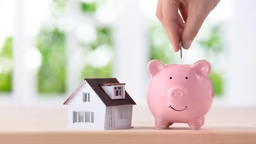
I’m going to journey back in time a bit — to before the economic downturn — as to how things were and compare that to today’s buyer’s perspective.
Before the financial crisis of the mid-2000s, money was easy to get, and people had this “life of grandeur” ideal, whether they were looking for a legacy log home or simply a trophy house. It didn’t matter whether it worked for them long term or not.
The dynamic shift that I have seen over the past several years, however, is a mantra of “downsize and simplify,” which manifests itself in three main components: 1. Designing a smaller footprint with fewer interior walls (aka, open concept); 2. Developing a floor plan with smarter space allocation and positioning; and 3. Spending money in areas that will get the most use. Here, we’re going to focus on the third point.
See also Creating an Affordable Log Home
As log home buyers recognize that what they really want is value for their money, the way I approach it with them is almost akin to a spreadsheet: what’s the cost; what’s the benefit; and what will be the return on the investment (the ROI). Whether it’s a light fixture, hardwood flooring, countertop material ... whatever it may be; every single item that goes into a home should be carefully considered, as each one impacts the budget and has a purpose/return on that investment.
As an example, if you love to entertain and you plan to do a lot of cooking in your log home, then it makes sense to allocate a large portion of your budget to the kitchen. Make the design suit your needs, and choose finishing materials that will be durable, long lasting and create the showstopper that will capture its return on your investment. Because you’re going to use it every single day you can translate that into a spreadsheet and calculate it out to determine the ROI. For instance, if you use your kitchen every day for the next five years, that’s 1,825 days. If your kitchen cost $70,000, that’s roughly $38 per day. Use it for 10 years and it breaks out to $19 per day. That’s a good ROI!
Conversely, something like a guest bedroom may only get used a handful of times per year. So, if you over-design a guest bedroom/bath, you can fall into a negative ROI trap, equating to hundreds of dollars per use. For that rate, you could put your friends and family up at the Ritz and invest your money in other, more utilized, areas of your home. That’s a better way to balance your log home budget.
So when I’m talking to clients about how they perceive their “wants,” this is what it comes down to: It’s really not just about what you want. More accurately, it’s about how you’re going to live in your home, both now and in the future. Looking ahead is very important.
Here’s why:
Say in your retirement years, you want to take up painting or woodworking. You’re going to need a space in the house suited to that hobby. You’ll need resilient flooring and lots of light sources, particularly natural light. You may want a sink so you can clean up easily. A woodshop likely will require an abundance of electrical outlets to run equipment. Features like extra windows or additional plumbing and wiring are far less expensive to install at the onset than to try to retrofit later on. It could be tens of thousands of dollars to fix a design/build blunder down the road.
See also The Sacrifices of Building a Log Home
On the flip side, there are a number of features that people think they need but end up being underused in reality. For example, people have a romanticized idea about master baths — especially tubs. They think they’re going to light candles, sip wine and soak their day away every evening. Some people do. Most don’t. An oversized whirlpool soaking tub is not an inexpensive purchase. You have the tub itself, plus plumbing, plus fixtures, plus tile surround, plus labor … before you know it, you have upwards of $7,000 or more invested just in the tub. So folks spend all this money but get little to no ROI from it. If you use it twice a year for five years, you’re spending $70 per use. That’s nearly double the cost of our earlier kitchen ROI scenario.
The key thing to keep in mind is that no amenity is a waste of money if it’s really going to get used. Your designer, your builder, your friends — they all may try to steer you in one direction or another, but to have a log home that you love, you need to take an honest look at your lifestyle and your budget, then allocate appropriately. Do that, and you won’t regret a single cent you spend.





_11868_2024-09-17_08-44-256x288.avif)





